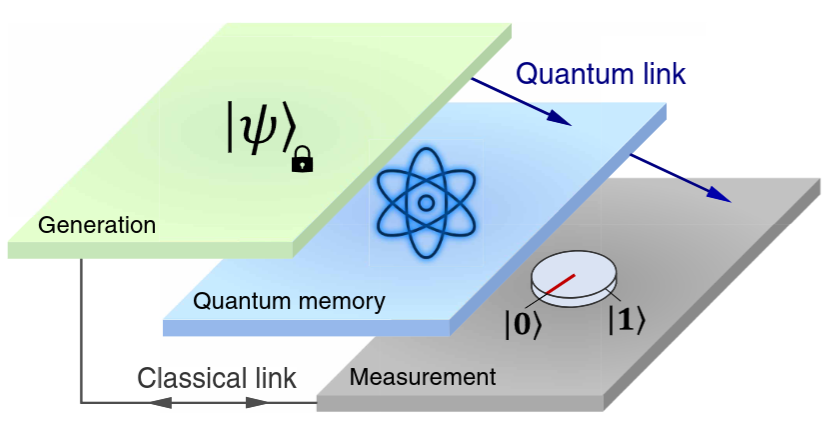A quantum cryptography protocol incorporating quantum memory
Scientists have succeeded in adding a layer of quantum storage to a cryptography protocol, an essential step towards the practical application of the encryption properties offered by quantum mechanics.
References :
Quantum cryptography integrating an optical quantum memory, Hadriel Mamann, Thomas Nieddu, Félix Hoffet, Mathieu Bozzio, Félix Garreau de Loubresse, Iordanis Kerenidis, Eleni Diamanti, Alban Urvoy, Julien Laurat, Science Advances 11, eadx3223 - Published 19 September 2025.
DOI : 10.1126/sciadv.adx3223
Open Archives : arXiv
Quantum memories are set to play a central role in future quantum networks, as they enable information to be stored and retrieved on demand. While their usefulness for entanglement distribution and long-distance communications is well established, their potential extends far beyond this.
The present study was carried out in the following CNRS laboratories:
Laboratoire Kastler Brossel (LKB, CNRS/Collège de France/ENS-PSL/Sorbonne Université)
Laboratoire d’informatique (LIP6, CNRS/Sorbonne Université)
Institut de recherche en informatique fondamentale (IRIF, CNRS/Université Paris Cité)
Researchers have just demonstrated for the first time that a quantum memory can be integrated into a cryptography protocol. This demonstration is the result of a fruitful collaboration between two PEPR Quantum projects, the QMemo project and the QCommTestBed project.
The protocol chosen is that of ‘quantum currency’, proposed nearly forty years ago by Stephen Wiesner, which guarantees complete unforgeability for banknotes using this validation protocol. The major innovation here lies in the introduction of a storage step: the customer's ‘quantum card’ is stored in a memory before being used. The first demonstrations of quantum currency were essentially proofs of concept carried out on the fly, without a storage stage. However, for a quantum banknote or card to be used effectively - for example, for deferred or remotely verified payments - it is necessary to integrate a memory that ensures the temporary preservation of quantum states. This result was only possible thanks to the unprecedented performance of the memory used - a set of laser-cooled caesium atoms - combining very high storage efficiency and extremely low noise. This performance guarantees the security thresholds required for future applications, which had previously been out of reach.
This breakthrough shows that quantum memories have now reached a level of maturity that allows us to envisage their deployment in practical applications. They are no longer limited to preserving information in quantum repeaters, but are gradually becoming versatile tools for quantum networks. These results are published in the journal Science Advances.

